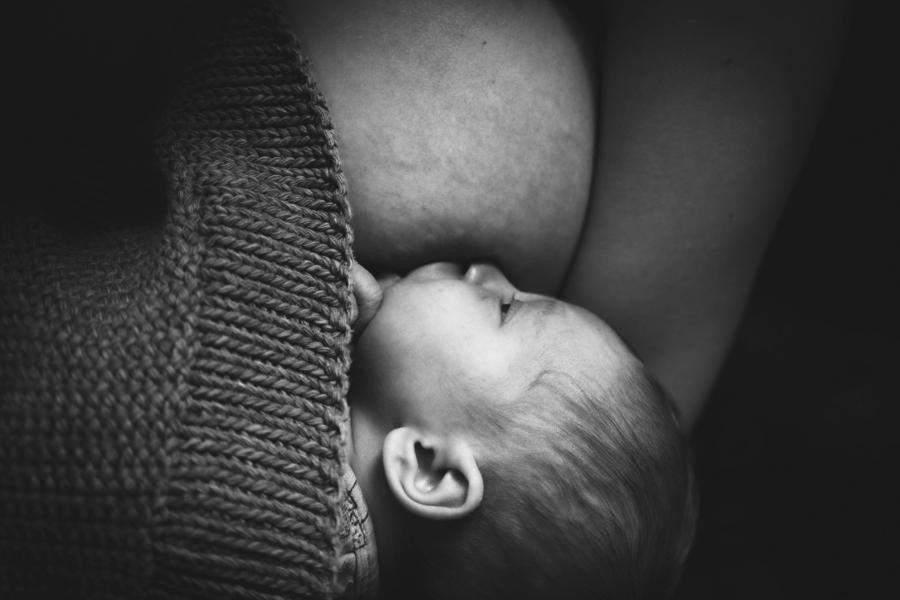Postpartum lochia (and postpartum bladder weakness): signs to look out for after childbirth
After childbirth, many changes occur in the body of a new mother. Some can be more surprising than others, when you're not expecting them.
Lochia and urinary incontinence are two good examples.
These discharges may seem confusing, but they are an integral part of the recovery process after childbirth.
In this article, we'll take an in-depth look at what lochia are, including their duration, characteristics and signs to watch out for to prevent complications.
What are lochia and what role do they play?
Lochia are vaginal discharges that occur after childbirth. Composed of blood, cervical mucus and uterine debris, they play a crucial role in the postpartum healing process.
The presence of lochia is a sign that the uterus, having been stretched during pregnancy, is beginning to return to its original size and shape.
Here are some of the important roles lochia plays in the postpartum healing process.
Removal of uterine debris
Lochia contains not only blood, but also uterine tissue debris such as endometrial cells, cervical mucus and placental remnants.
It is essential that this debris is expelled so that the uterus can return to normal health and function after delivery.
Infection prevention
By removing debris and preventing blood clogging, lochia helps clean the uterus and reproductive tract, reducing the risk of postpartum infection and the development of serious complications.
Stimulation of uterine contraction
The expulsion of lochia is often accompanied by uterine contractions, also known as "after pains”. These contractions help the uterus to return to its original size by tightening the uterine muscles, thus reducing the risk of postpartum hemorrhage.
Indication of postpartum health
The characteristics of lochia (color, consistency, volume, etc.) can provide valuable information about a person's postpartum health.
For example, excessive lochia accompanied by large blood clots may indicate an underlying problem requiring immediate medical attention.
In short, not only are lochia normal, they play an essential role in the body's healing process after childbirth.
It's important to understand their importance and to monitor them closely to detect any abnormal changes, thus promoting optimal recovery.

Characteristics of lochia
Lochia has several distinct characteristics that evolve over time and can provide important clues about the healing stage or health status of the postpartum mother.
Here are some of the main characteristics of lochia.
Composition
Lochia is composed of blood, cervical mucus and uterine debris.
They also contain placental membrane debris and other tissues associated with pregnancy.
Color
Initially, lochia are often bright red in color, similar to menstrual periods.
Over time, their color tends to evolve from red to pink, then to yellow and eventually to white or brown. This color change is normal, and means that the healing process is underway.
Consistency
Lochia tends to be more liquid and abundant at first, then progressively thicker and less abundant over time.
Consistency may vary from one woman to another. It also depends on the length of time since delivery.
Frequency
In the early stages, lochia is usually quite abundant and frequent, and it's not uncommon to have to change protection every few hours.
Over time, their frequency gradually diminishes. If, after six weeks, lochia has not diminished in intensity, we recommend that you consult your doctor.
Duration
On average, lochia lasts two to six weeks. Several factors can influence this duration, including the mode of delivery and whether or not the mother is breastfeeding.
One month after delivery
One month after delivery, in most women, lochia is less frequent and less abundant than on the first day.
At this stage, the discharge may change from bright red to a pinkish or brownish hue. Their consistency also changes, and they become less liquid over time.
Abundant and frequent lochia are still possible at this stage.
Two months after delivery
Two months after giving birth, lochia is minimal, or even completely over for most women.
If discharge persists, its color varies from pinkish to yellowish or white, and its consistency approaches that of normal vaginal discharge.
If lochia lasts longer than six to eight weeks, or if heavy or abnormal bleeding occurs at this stage, we recommend you consult your healthcare professional to eliminate any risk of complications.

Lochia and breastfeeding
Breastfeeding is a natural and complex process that generates a cascade of hormonal interactions in the new mother's body.
One of the key hormones involved in breastfeeding is oxytocin, often called the "love hormone" or "bonding hormone".
Oxytocin is responsible for triggering uterine contractions during childbirth to help expel the baby, but it also continues to be released during breastfeeding to stimulate uterine contraction.
This postpartum uterine contraction, also known as "uterine involution", helps the uterus regain its pre-pregnancy size and shape.
By stimulating these uterine contractions, oxytocin helps reduce the duration of lochia.
In fact, these contractions help to compress the blood vessels in the uterine wall, reducing bleeding and speeding up the recovery process.
However, it is important to note that the effect of breastfeeding on lochia can vary from one woman to another.
Some women may experience a significant reduction in the duration and intensity of lochia within the first few days of breastfeeding, while others may experience more prolonged bleeding.
The frequency and intensity of feedings, as well as individual sensitivity to hormones, can influence this effect.
Lochia after C-section?
Yes, women who have given birth by C-section can also experience lochia!
While these lochia may differ in some respects from those following a vaginal delivery, they are still part of the postpartum recovery process and play an important role in helping the uterus return to its normal size and shape.
After a C-section, postpartum bleeding may be a little different due to the nature of the surgical procedure.
The uterus still undergoes a series of contractions to expel pregnancy residues, but the nature of these contractions may be slightly altered by the scar.
As a result, lochia may sometimes be less abundant or of shorter duration in women who have undergone C-section, due to the way the uterus contracts and empties.
However, it's important to note that lochia after C-section can also vary from woman to woman depending on various factors such as the presence of postoperative complications, the length of the surgical procedure, the use of medication during C-section, etc.
It is also essential that women who have had a C-section pay particular attention to the scar and report any signs of infection or complications to their healthcare professional.
Excessive bleeding or persistent abdominal pain may require further medical evaluation to rule out any postoperative complications.

What about bladder weakness?
While bladder weakness is common during pregnancy, mostly because of the pressure exerted on the bladder, postpartum bladder weakness is also quite common.
It is often caused by weakened pelvic floor muscles, which have been stretched and compressed during childbirth, leading to difficulties in controlling urination.
However, even though postpartum bladder weakness is common, it's not necessarily "normal", in the sense that it shouldn't be ignored, and more importantly, it can be treated.
Kegel exercises are often recommended by physiotherapists specializing in perineal and pelvic health to help strengthen pelvic floor muscles and improve bladder control.
These exercises are designed to specifically target the pelvic floor muscles, which support pelvic organs such as the bladder, uterus and rectum.
Warning signs: when to consult?
Recognizing the signs of lochia complications is essential to a woman's health and well-being after childbirth.
While lochia is a normal part of the postpartum healing process, some symptoms may indicate underlying problems that require special or immediate medical attention.
Here are the main signs to watch out for.
Excessive bleeding
Bleeding that suddenly becomes heavy enough to fill a sanitary pad in an hour or less may indicate postpartum hemorrhage.
This intense blood loss may be accompanied by a feeling of weakness or dizziness, requiring immediate medical assessment.
Persistent abdominal pain
Severe, persistent abdominal pain that doesn't improve with rest or despite painkillers may be a sign of infection or inflammation.
If you experience intense or acute abdominal pain that persists beyond what is considered normal after childbirth, it's important to consult your doctor as soon as possible.
Nauseating smells
Lochia with an unpleasant or foul-smelling odor may indicate an infection, such as endometritis or an infection of the uterus.
If you notice a sudden change in the smell of your lochia, especially if it's accompanied by fever, chills or pelvic pain, it's imperative that you consult your doctor.
L'Ovary washable panties, an essential ally for your postpartum lochia
Postpartum lochia can be uncomfortable, but it's natural and part of the normal recovery process after childbirth.
To be well prepared, make sure you have on hand a few washable postpartum panties, designed for this special time in your life.
Not only are they super comfortable, they're also 100% safe for your healing body.
What's more, you'll be able to reuse them when your menstrual cycle returns to normal, making them an ecological, economical and wise choice.
If you'd like to know more, we invite you to read this article we've published to help you choose the best postpartum panties.
In short, by knowing what to expect and staying informed, new moms like you can get through this period with confidence and peace of mind, knowing that they're taking care of their health and well-being.
With love.
Mme L'Ovary























